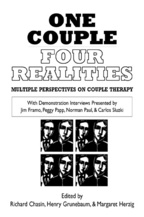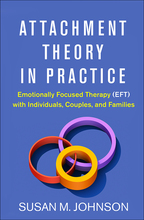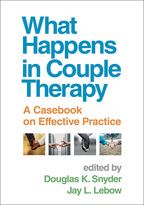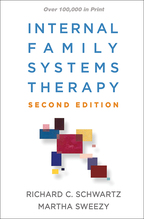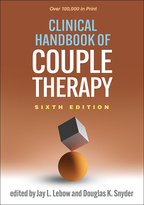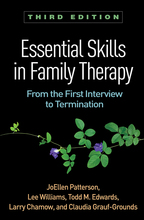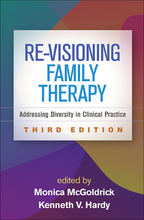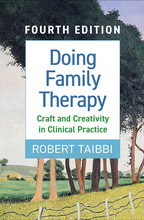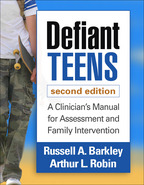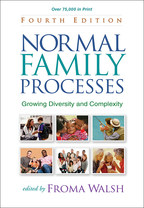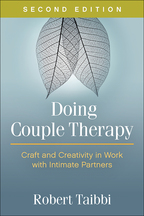One Couple, Four Realities
Multiple Perspectives on Couple Therapy
Edited by Richard Chasin, Henry Grunebaum, and Margaret Herzig
Paperback
Paperback
orderMarch 1, 1992
ISBN 9780898620290
Price: $66.00 420 Pages
Size: 6⅛" x 9¼"
Copyright Date: 1990
Sign up for emails on upcoming titles on Families & Couples (with special discounts)!
An outgrowth of an Harvard Medical School Couple Therapy Conference, this is the first book on couple and family therapy to combine a range of clinical theories with a single case discussion. At the conference, Jim Framo, Peggy Papp, Norman Paul, and Carlos Sluzki—therapists well-known for their differing styles and theoretical persuasions—described and explained the sessions they each conducted with the same couple. These sessions varied greatly: each has a distinctive focus; two included family of origin members; one involved a co-therapist. Later, other therapists, representing an even broader range of perspectives, discussed their viewpoints and speculated how they might have approached the same case.
In ONE COUPLE, FOUR REALITIES: MULTIPLE PERSPECTIVES ON COUPLE THERAPY, the experience of attending this conference is recreated and expanded. The reader is first given the same background information about the couple that was supplied to the interviewers and is then presented with edited transcripts and commentary by Framo, Papp, Paul, and Sluzki about their own sessions. Further perspectives and approaches to the case are provided by a number of other teachers of therapy. Thus, the reader is invited to view the couple from over a dozen different perspectives, including psychodynamic, object relations, systemic, behavioral, feminist, contextual, and eclectic orientations.
Perhaps the most fascinating perspective is provided by the couple, “Larry” and “Jennifer,” who, in the last section of the book, detail their reactions to the four demonstration sessions. Their stunningly candid and intelligent accounts, given soon after the original interviews, and then again six years later, provide a compelling conclusion to the book.
Most published cases are selected retrospectively to illustrate the power of the author's approach. By contrast, this couple was selected in advance: their case, ongoing at the time in a Boston clinic, seemed suitable for the demonstration interviews to be videotaped for the Harvard conference. The couple was bright and engaging. They and their families of origin were willing to participate. The interviewers agreed to document the sessions no matter how they turned out. This prospective method of case selection lent authenticity to the interviews, permitting the viewers, and now the reader, to witness clinical work as it might unfold in the office of any therapist.
This volume is not intended to and does not demonstrate the superiority of one approach over another. Each of the four demonstration interviews represents careful, conscientious work, and each leads to a different “reality” about the couple. Only in a volume such as this can one see in high relief what each approach brings to light and what each obscures.
All therapists interested in couples should find this book useful, as it stimulates readers to scrutinize their own theories and practices, consider how they might have approached Larry and Jennifer, and ponder what their own viewpoint may have caused them to overlook. Clinicians will appreciate the theoretical discussions and case analyses. The book is a natural supplemental text for courses in couple or family therapy. Teachers may learn much from the appendix which addresses ethical and therapeutic aspects of using videotaped demonstration interviews—important issues that have been neglected in the professional literature. The book may also have personal resonance for non-professionals interested in exploring the complexity of one couple's relationship. All will find ONE COUPLE, FOUR REALITIES accessible and thought-provoking. Through the lives of “Larry” and “Jennifer,” it addresses timeless and timely questions about the personal, familial, and cultural forces that create, shape, and strain the bonds that hold couples together.
In ONE COUPLE, FOUR REALITIES: MULTIPLE PERSPECTIVES ON COUPLE THERAPY, the experience of attending this conference is recreated and expanded. The reader is first given the same background information about the couple that was supplied to the interviewers and is then presented with edited transcripts and commentary by Framo, Papp, Paul, and Sluzki about their own sessions. Further perspectives and approaches to the case are provided by a number of other teachers of therapy. Thus, the reader is invited to view the couple from over a dozen different perspectives, including psychodynamic, object relations, systemic, behavioral, feminist, contextual, and eclectic orientations.
Perhaps the most fascinating perspective is provided by the couple, “Larry” and “Jennifer,” who, in the last section of the book, detail their reactions to the four demonstration sessions. Their stunningly candid and intelligent accounts, given soon after the original interviews, and then again six years later, provide a compelling conclusion to the book.
Most published cases are selected retrospectively to illustrate the power of the author's approach. By contrast, this couple was selected in advance: their case, ongoing at the time in a Boston clinic, seemed suitable for the demonstration interviews to be videotaped for the Harvard conference. The couple was bright and engaging. They and their families of origin were willing to participate. The interviewers agreed to document the sessions no matter how they turned out. This prospective method of case selection lent authenticity to the interviews, permitting the viewers, and now the reader, to witness clinical work as it might unfold in the office of any therapist.
This volume is not intended to and does not demonstrate the superiority of one approach over another. Each of the four demonstration interviews represents careful, conscientious work, and each leads to a different “reality” about the couple. Only in a volume such as this can one see in high relief what each approach brings to light and what each obscures.
All therapists interested in couples should find this book useful, as it stimulates readers to scrutinize their own theories and practices, consider how they might have approached Larry and Jennifer, and ponder what their own viewpoint may have caused them to overlook. Clinicians will appreciate the theoretical discussions and case analyses. The book is a natural supplemental text for courses in couple or family therapy. Teachers may learn much from the appendix which addresses ethical and therapeutic aspects of using videotaped demonstration interviews—important issues that have been neglected in the professional literature. The book may also have personal resonance for non-professionals interested in exploring the complexity of one couple's relationship. All will find ONE COUPLE, FOUR REALITIES accessible and thought-provoking. Through the lives of “Larry” and “Jennifer,” it addresses timeless and timely questions about the personal, familial, and cultural forces that create, shape, and strain the bonds that hold couples together.

